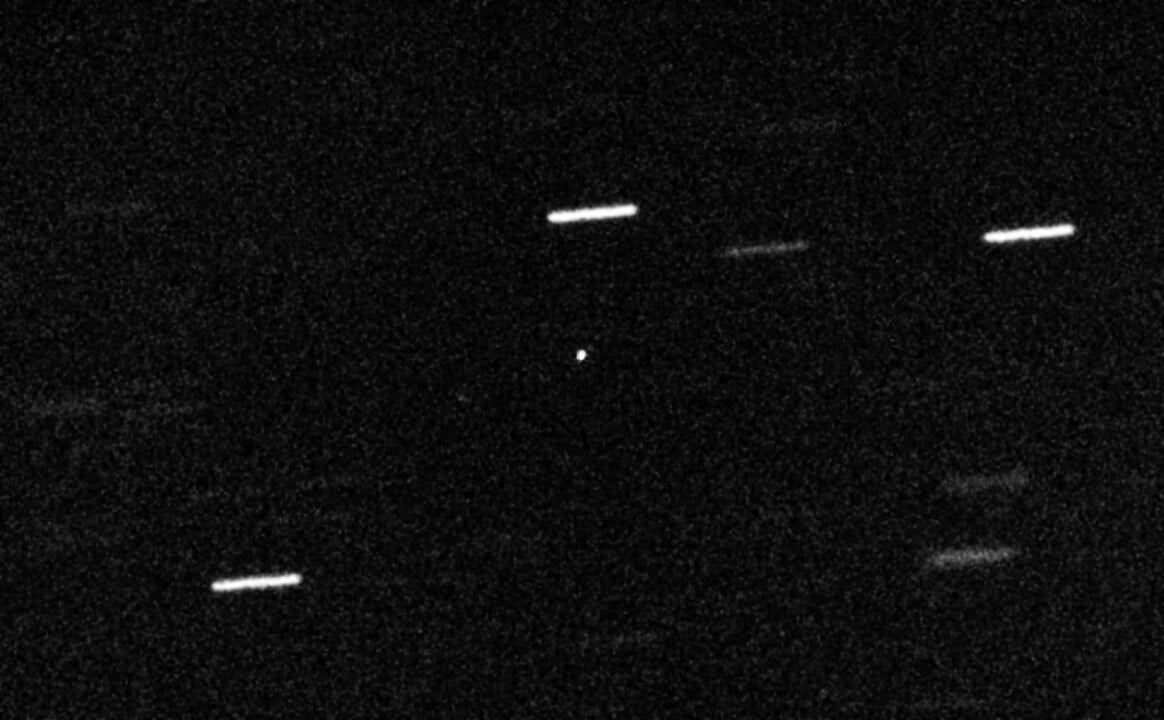Interstellar objects are really rather rare. Since astronomers first spotted 'Oumuamua racing through our Solar System in 2017, we've detected only two more visitors from beyond; comet Borisov in 2019, and now 3I/ATLAS, discovered on 1 July 2025. These objects offer tantalising glimpses into other stellar systems, carrying material formed around distant stars. But they don't linger. They sweep through on hyperbolic trajectories, never to return, which makes every observation precious.
 ʻOumuamua as shown here imaged with the 4.2 metre William Herschel Telescope on the Canary Islands is seen as a point of light in the centre of the image (Credit : Alan Fitzimmons)
ʻOumuamua as shown here imaged with the 4.2 metre William Herschel Telescope on the Canary Islands is seen as a point of light in the centre of the image (Credit : Alan Fitzimmons)
The challenge with tracking any fast moving celestial object is precision. When something is travelling at a quarter of a million kilometres per hour, even small uncertainties in its position compound rapidly, making it difficult to predict where to point telescopes for follow up observations. Throughout the summer, astronomers relied on Earth based telescopes to map 3I/ATLAS's trajectory, but the margins of error remained frustratingly large.
Then ESA scientists had an innovative idea. The ExoMars Trace Gas Orbiter (TGO) happened to be in the right place at the right time. Between 1 and 7 October, as 3I/ATLAS passed relatively close to Mars, approaching within 29 million kilometres on 3 October, the spacecraft turned its CaSSIS camera away from the Martian surface and toward the sky. This wasn't what the instrument was designed for. CaSSIS normally points downward in high resolution at Mars's terrain, not upward at distant comets. But the team repurposed it brilliantly, capturing images of the tiny comet against a backdrop of stars.
The Mars orbiter's observations changed everything. By being roughly ten times closer to the comet than Earth based telescopes, and viewing it from a completely different angle, TGO provided a second data point for triangulation. When combined with Earth observations, this dramatically reduced the uncertainty in the comet's predicted position.
 Colour and Stereo Surface Imaging System (CaSSIS) destined for the ExoMars Trace Gas Orbiter (Credit : Nicolas Thomas)
Colour and Stereo Surface Imaging System (CaSSIS) destined for the ExoMars Trace Gas Orbiter (Credit : Nicolas Thomas)
What made this technically challenging wasn't just repurposing the camera. The ExoMars TGO orbits Mars rapidly, and Mars itself orbits the Sun. Calculating the comet's trajectory required accounting for the spacecraft's exact location as it whipped around the red planet, adding layers of complexity that are normally negligible in Earth based observations. Multiple ESA teams, from flight dynamics to science and instrument specialists, collaborated to tackle these subtleties and squeeze out every bit of accuracy.
The result represents a first for planetary science. The data on 3I/ATLAS became the first astrometric measurements from a spacecraft orbiting another planet to be officially submitted to and accepted by the Minor Planet Center, the international clearinghouse for asteroid and comet observations.
While 3I/ATLAS poses no danger to Earth, tracking it served as an invaluable rehearsal for planetary defence. If astronomers ever need to precisely track an object that does threaten Earth, this technique demonstrates the value of using spacecraft beyond Earth orbit as additional observation platforms. Having multiple vantage points across the Solar System could prove crucial for calculating trajectories with the accuracy needed for deflection missions.

